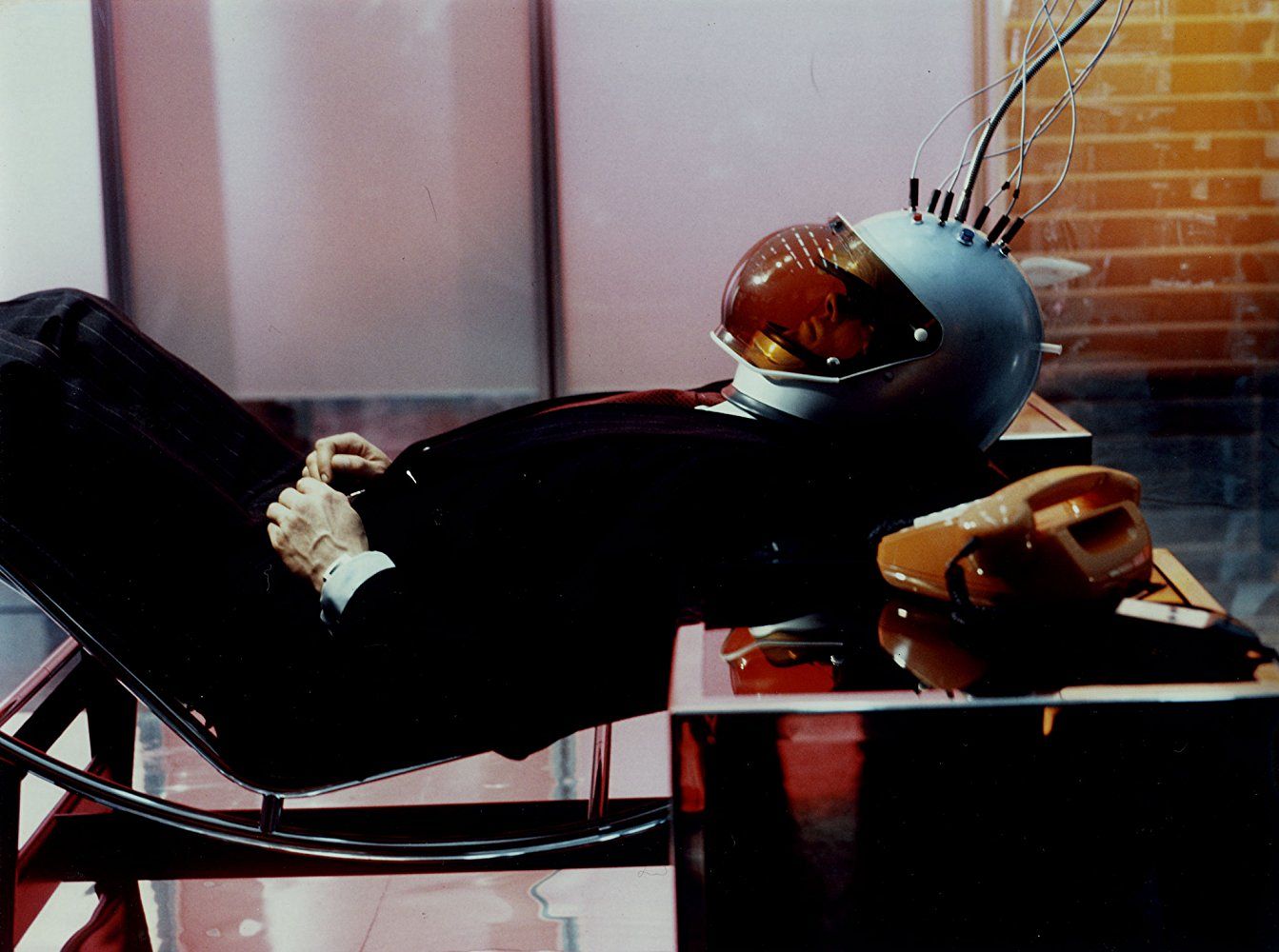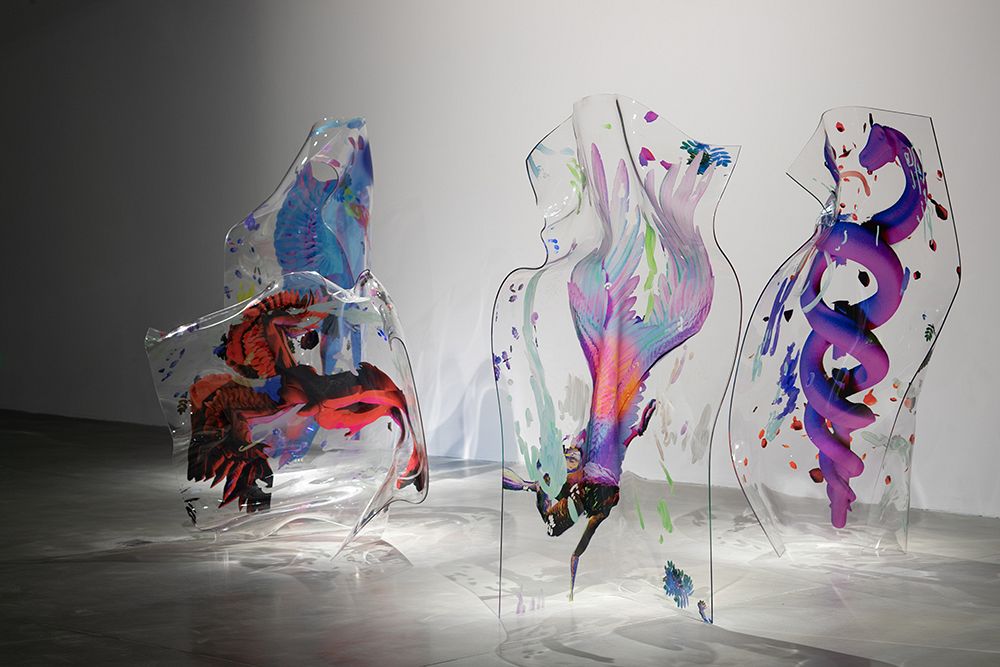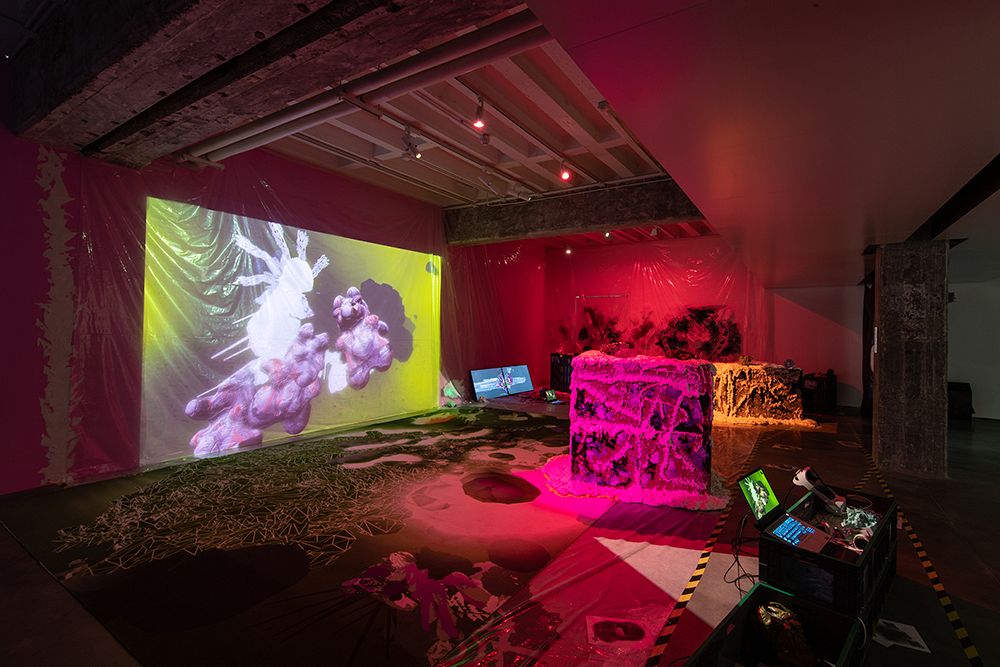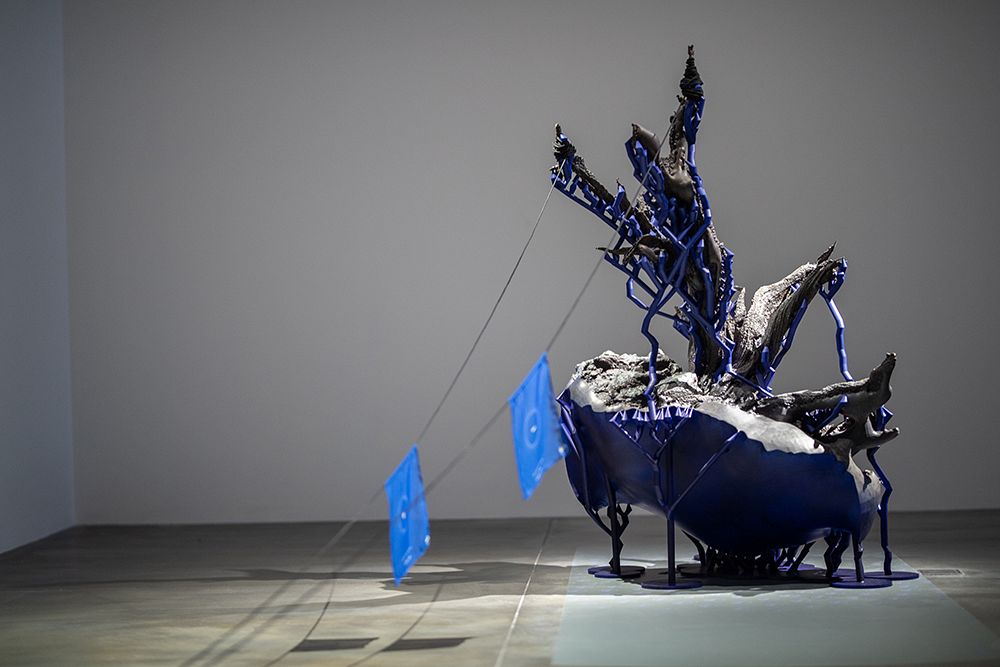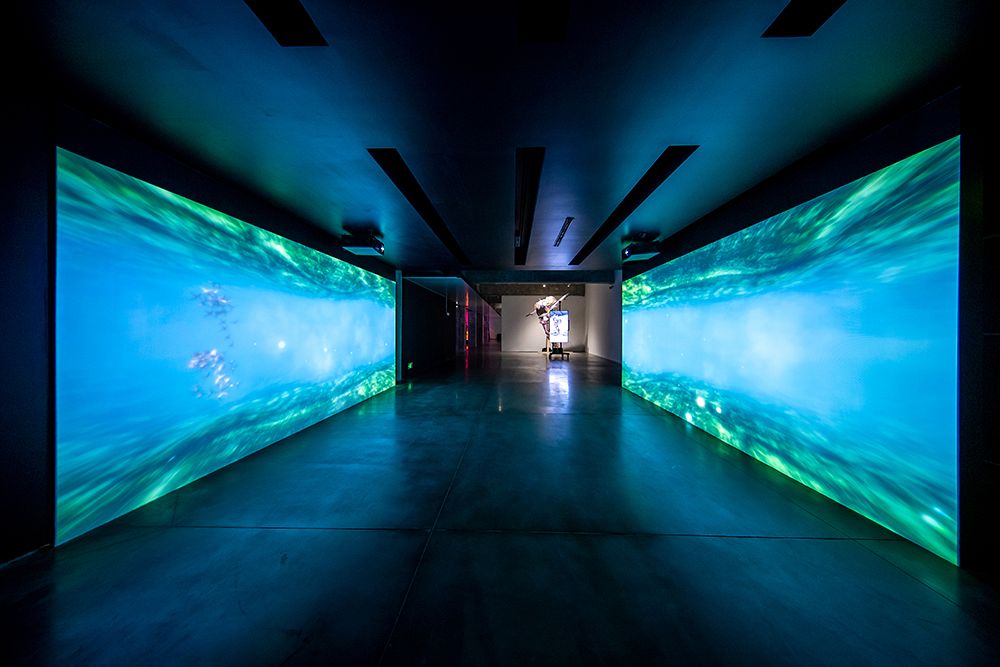The year 2020 hit the accelerator on explorations of all things online. Institutions long engaged in the study of web art may have been very well-prepared, but for a great many institutions, the sudden rush to move online was accompanied by a temporary, substitutive, and stress-based reaction, and the sense that they had no alternative. The inherent paradox of online exhibitions is that, when they are treated as offshoots of offline exhibitions, they invariably confront a comparison between the online show and its “true” offline incarnation. Sometimes, online exhibitions are simply a backup, an afterthought, or a long-term archive for the offline show. Online exhibitions that do not have an offline “original” have been repeatedly challenged because the online and offline shows do not speak the same language of scene construction, embodied experience, or spatial clues, and sometimes their innate technological features are overlooked. In “Curating Online Exhibitions,” Michael Connor, artistic director of Rhizome at the New Museum in New York, wrote that online exhibitions should not attempt to replace real exhibitions; rather, they should consider how digital artifacts can interact with other online resources (not necessarily created by the artist) in a “performance." 1Michael Connor, “Curating Online Exhibitions,” Rhizome, accessed March 22, 2021, link
Jointly curated by Michael Connor, Baoyang Chen, and Taiyun Kim, World on a Wire, which recently opened at Hyundai Motorstudio Beijing, revealed another aspect to the online/offline discussion. For artists using digital technologies as their primary method or medium, the consideration of online and offline status is endogenous to their work. The choice of or division between online and offline is present in every work, and not just the exhibition overall. This online choice must be made for every work and element in the show, and not just the one-time decision to hold the exhibition online. How does a browser-based artwork find a rational setting in a physical space? Would creators staying true to their digital natures actually consider physical vehicles not necessarily familiar to most creators due to the objective requirements of an offline exhibition? Does the “spatial” tension between online and offline act against the distribution or transmission logic of the work? World on a Wire is a concentrated discussion of these questions.
The exhibition title is an homage to Rainer Werner Fassbinder’s 1973 film World on a Wire (Welt am Draht). The film is a sci-fi reflection of cybernetics intervening in social functions, economic forecasts, and political management, but it is also an allegory of a world guided by a specific view on technology. People suspected that the world was simulated and that there was a machine clicking away in the background, with the ultimate goal of precise calculation, control, and forecasting. The exhibition attempts to address the idea of simulation, focusing particularly on simulation as a buffer zone in the imagined hostilities between online and offline, as well as the discursive possibilities for organically unifying the two that it might offer. As the exhibition text describes, the show explores “the possibilities and poetics of simulation as an artistic practice.”2“World on a Wire: Curatorial Statement,” accessed March 22, 2021, link Here, simulation employs the dual discursive spaces of rhetoric and technology; this conceptual preference can be studied more deeply and broken into a series of smaller threads.
Several of the physical installations presented at the exhibition venue show how the virtual world overflows into the real one. To use Connor’s metaphor, they are “banging the bricks.” In the Super Mario video game series, player characters bang bricks with their heads to obtain coins; this phrase has now become a way to say that you’re going to the ATM, showing that the rhetoric and logic of the virtual world can flow into the real world. In I’m my loving memory (2020-2021), Rachel Rossin takes images from video games, such as red birds or entwined purple snakes, UV prints them on transparent acrylic, then melts and shapes the acrylic. Tablets hanging near the works offer options to add augmented reality elements. In the exhibition space, Theo Triantafyllidis placed a television screen on wheels, which faces a sculpture of an animal-human hybrid that is very close to what appears on screen—every part of it retains the aesthetic characteristics of digital modeling and disrupts perspective in the real world until it looks more like a suspended plate. Pete Qiang Jiadong’s Dungeon: Maximalism HyperBody (2021) sprawls to occupy nearly a quarter of the main exhibition hall’s space. The portal that the artist spent two weeks building on-site incorporates various semi-transparent and soft materials, such as printed textiles and carpets; under magenta light, the work exhibits a quality of conscious ephemerality. The visual media shown in the portal derive from his online project (http://dungeon.hyperbody.space), but visitors were invited to bring VR equipment so they could leap from this physical stronghold of visual maximalism directly into a digital world of visual maximalism.
With regard to the physical vehicles and the spatial tension between the digital and the physical, these three works constitute a concrete subject for discussion. The digital layers of these three works are preserved in the gallery, existing on TV screens, suspended tablet computers, and VR headsets; these layers also require the viewer’s physical participation, or more precisely, an encounter. The consistency of this encounter seems to constitute a starting point for understanding the connection between the physical vehicle and the digital part of the work. A simulation can imply a leap; wearing headphones or a VR headset locks perception within the boundaries of the screen, but in some situations, the simulation can oscillate between the natural boundaries of the digital world and physical space, requiring the viewer to simultaneously engage with both the physical objects and the information provided on the screen. The physical and digital dimensions of this experience can augment, disrupt, or neutralize one another. Rossin has written that the folds in the acrylic are traces left by her body, and Qiang personally constructed the on-site dungeon. Whether these embodied interventions supplement the digital level or are independent, they engage with the artists’ investigations of the physical space. In contrast, Timur Si-Qin chose to present a physical object in Juniper (2019). Although he had a 3D original that he could reference, this juniper tree lets the physical materials tell the story.
In the works that only exist in the on-screen world—at least, the ones for which there is no essential difference between viewing them on a screen or in a browser—perhaps there is another element that the simulation suggests: the coordinate of time. Time substantiates the inherent logic of the large-scale simulation in Fassbinder’s film. Only a future, verifiable forecasting model is valid, and only a simulation created by this model can be more perceptually rigorous. In “The World Any Other Way: Simulation and the Expansion of Political Possibility,” Francis Tseng notes that simulations are “primarily concerned with the organization of time,” and are “designed to emulate dynamic processes that play out over milliseconds, minutes, months, years, eons.”3Francis Tseng, “The World Any Other Way: Simulation and the Expansion of Political Possibility,” accessed March 22, 2021, link Interestingly, Those Who (2019) by Sascha Pohflepp, Matthew Lutz, and Alessia Nigretti, Butterfly Room: Special Edition (2014/2021) by Tabor Robak, and ThingThingThing (2019) by ZZYW (New York artists Zhenzhen Qi and Yang Wang) reflect narrative and aesthetic perspectives that lack a sense of reality. In other words, the goal of the simulation in these works is simulating the possible, not simulating the real; these possibilities are established in the artist’s worldview, which evolves over time. In Butterfly Room, the artificial life forms in highly saturated colors “evolve” on their own. In ThingThingThing, split or saw-toothed “organisms” rooted in basic geometric shapes (built by users from around the world over the last two years) rest and mutate in a brilliantly colored abstract landscape without visible shadows. Both works are reminiscent of John Horton Conway’s 1970 cellular automaton. By simplifying life to a set of rules and adding random and infinite attempts, he had single cells move and evolve into many complex multi-cell entities in the world of a program. The “unlimited” artwork duration listed on the exhibition labels must confront the friction between the length of the artwork and viewing time, particularly in the physical gallery. In another sense, the autonomy of these systems over infinite time allows parts of the creator’s work to transcend the boundaries of the time and space of the exhibition. Some extensions of the simulated world do not exist in the viewer’s time or the exhibition period; these worlds are truly suspended in the underlying technical systems in which they operate.
Even if many works in the physical show inspire contemplation of the simulation, the theme of the exhibition overall almost comes out of focus. In the film World on a Wire, the simulation is effective as a base assumption because of the fear, anxiety, doubt, and even existentialist reflection it inspires in the viewer. Political scientist Robert Axelrod believes that simulation can provide a generative research method beyond familiar induction and deduction. This online and offline traveling exhibition will make three stops around the world, and it may be truly worth considering what the idea of the simulation can generate as the exhibition travels.
Translated from the Chinese by Bridget Noetzel.
Bridget Noetzel is a translator, editor, and art consultant based in Hong Kong. She received a BA in both Chinese Language and the History of Art from Yale University. Since 2009, she has worked with galleries and artists in Beijing and Hong Kong, and she has translated and edited for major publications, institutions, and auction houses. In 2017, she co-founded the Asia Photography Project. She was the translator for Yi Ying’s history of modern Chinese art, entitled Art and Artists in China 1949-Present (Cambridge University Press, 2018).
Iris Long is a writer and independent curator. She currently works as a researcher on art, science and technology at Central Academy of Fine Arts, Beijing. She was shortlisted by the inaugural International Awards for Art Criticism. Her translation work, Rethinking Curating: Art after New Media, received nomination from AAC Art China awards (2016). In 2018, she was the recipient of Hyundai Blue Prize for curators. In 2019, she curated Lying Sophia and Mocking Alexa, Hyundai Motorstudios Beijing; Deja Vu, Today Art Museum, Beijing; Mind the Deep: Artificial Intelligence and Art, McaM, Shanghai and co-curated The Kind Stranger and Latent Landscapes, UN Art Center, Shanghai. She is also the art jury of ISEA 2019, and art jury of SIGGRAPH Asia 2020. Her research work has been presented in Art and Artificial Intelligence Open Conference at ZKM, Karlsrule; Korea Research Fellow Program at MMCA Seoul; Art Machines: International Symposium on Computational Media Art in Hong Kong, and International Symposium on Electronic Art and Digital Research in the Humanities and Arts in Gwangju.
